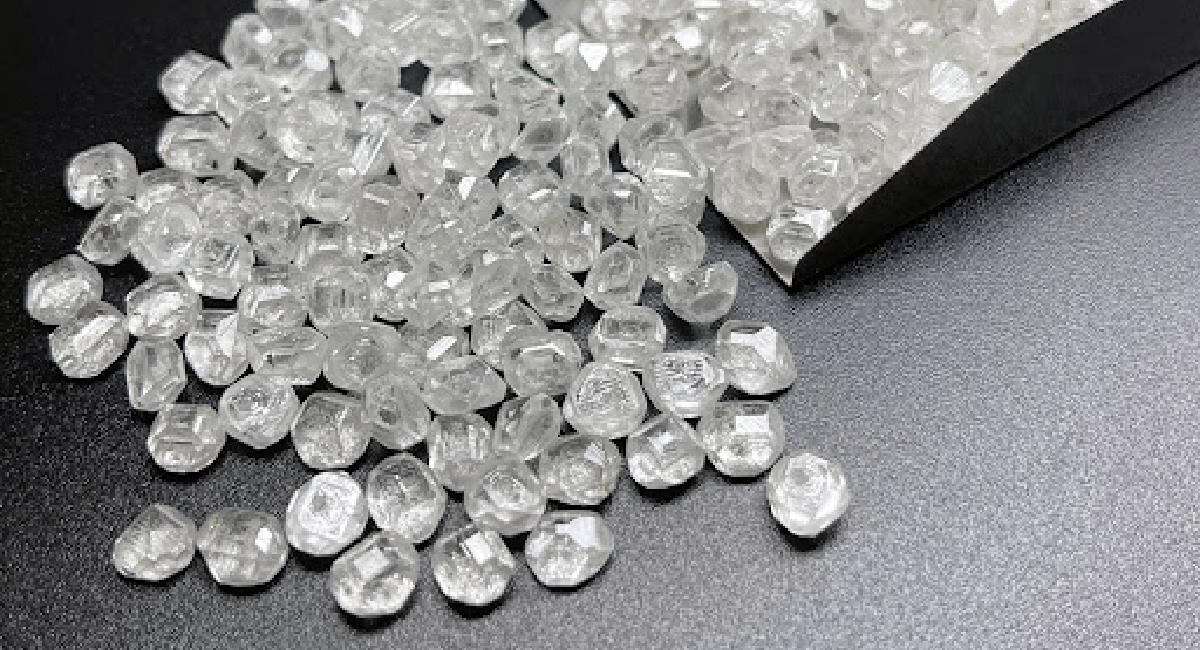In today’s world, where ethical considerations and environmental consciousness are at the forefront of consumer decisions, the popularity of loose man made diamonds is on the rise. These lab-grown gems offer an ethical and cost-effective alternative to their natural counterparts, without compromising on quality or brilliance.
1. Introduction to Loose Man Made Diamonds
Imagine a diamond that shines just as bright as its natural counterpart but comes without the ethical concerns of traditional mining practices. That’s the beauty of loose man made diamonds. These gems are created in controlled laboratory environments using advanced technology that replicates the natural diamond-growing process.
2. Understanding the Difference Between Natural and Man-Made Diamonds
What Are Natural Diamonds?
Natural diamonds are formed deep within the Earth’s mantle over millions of years under extreme pressure and heat. They are mined from the Earth’s crust through traditional mining methods, which often involve environmental disruption and social concerns.
How Are Man-Made Diamonds Created?
Man-made diamonds, on the other hand, are grown in labs using two primary methods: High Pressure High Temperature (HPHT) and Chemical Vapor Deposition (CVD). These processes mimic the natural conditions under which diamonds are formed but in a controlled environment, resulting in gems that are chemically and physically identical to natural diamonds.
3. Advantages of Choosing Loose Man Made Diamonds
Cost-Effectiveness
One of the most significant advantages of opting for loose man made diamonds is their cost-effectiveness. Since they are created in labs, the production costs are lower compared to mining natural diamonds, making them more affordable for consumers.
Ethical Considerations
Another crucial factor is the ethical considerations surrounding man-made diamonds. By choosing lab-grown gems, consumers can ensure that their purchase is not contributing to unethical mining practices, including human rights abuses and environmental degradation.
Environmental Impact
Furthermore, man-made diamonds have a significantly lower environmental impact compared to their natural counterparts. Traditional diamond mining involves extensive land disruption, water usage, and carbon emissions, whereas lab-grown diamonds require fewer resources and produce minimal environmental footprint.
4. Quality and Certification of Man-Made Diamonds
Quality Standards
Contrary to common misconceptions, man-made diamonds undergo rigorous quality control measures to ensure they meet industry standards. They are graded based on the same criteria as natural diamonds, including the four Cs: cut, color, clarity, and carat weight.
Certification Process
Man-made diamonds are also certified by reputable gemological laboratories to authenticate their origin and quality. This certification provides consumers with confidence and assurance regarding the authenticity and value of their purchase.
5. Popular Uses of Loose Man Made Diamonds
Engagement Rings
Loose man made diamonds are increasingly becoming a popular choice for engagement rings. Couples are drawn to the ethical and sustainable nature of these gems, allowing them to symbolize their love and commitment without compromising their values.
Jewelry
In addition to engagement rings, man-made diamonds are also used in a variety of other jewelry pieces, including earrings, necklaces, and bracelets. Their versatility and affordability make them an attractive option for designers and consumers alike.
Industrial Applications
Beyond jewelry, man-made diamonds have numerous industrial applications due to their hardness and durability. They are used in cutting tools, abrasives, and even in high-tech applications such as quantum computing.
6. Factors to Consider When Purchasing Loose Man Made Diamonds
Color
Like natural diamonds, man-made diamonds come in a range of colors, from colorless to fancy hues. The color grading scale is used to assess the color quality of these gems, with D being the highest grade for colorless diamonds.
Clarity
Clarity refers to the presence of internal or external flaws within the diamond. Man-made diamonds are typically cleaner and have fewer inclusions compared to natural diamonds, resulting in excellent clarity and brilliance.
Carat Weight
Carat weight measures the size of the diamond, with one carat equal to 200 milligrams. Man-made diamonds are available in various carat weights, allowing consumers to choose the size that fits their preferences and budget.
Cut
The cut of a diamond refers to its proportions and craftsmanship, which directly impacts its brilliance and sparkle. Man-made diamonds are expertly cut to maximize their optical properties, ensuring maximum fire and brilliance.
7. Caring for Loose Man Made Diamonds
Cleaning and Maintenance Tips
To maintain the sparkle and brilliance of loose man made diamonds, regular cleaning is essential. Simply soak the diamond in warm, soapy water and gently scrub with a soft brush to remove any dirt or residue. Avoid using harsh chemicals or abrasive materials that could damage the gem.
Storage Suggestions
When not wearing your loose man made diamonds, store them in a soft cloth pouch or jewelry box to prevent scratches and damage. Keep them away from other jewelry pieces to avoid friction and ensure their longevity.
8. Dispelling Common Myths About Man-Made Diamonds
Myth #1: Man-Made Diamonds Are Inferior in Quality
This is simply not true. Man-made diamonds undergo the same rigorous quality control measures as natural diamonds and are virtually indistinguishable in terms of beauty and durability.
Myth #2: Man-Made Diamonds Are Not Environmentally Friendly
On the contrary, man-made diamonds have a significantly lower environmental impact compared to natural diamonds, making them a more sustainable choice for eco-conscious consumers.
Myth #3: Man-Made Diamonds Lack Brilliance
Man-made diamonds exhibit the same brilliance, fire, and sparkle as natural diamonds, thanks to their identical chemical and physical properties. They are cut and polished to perfection to enhance their optical properties.

